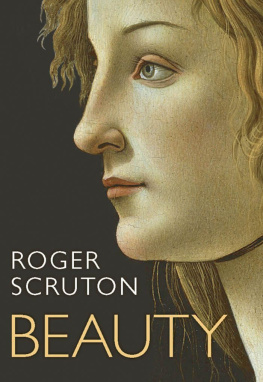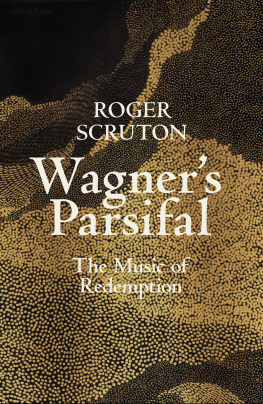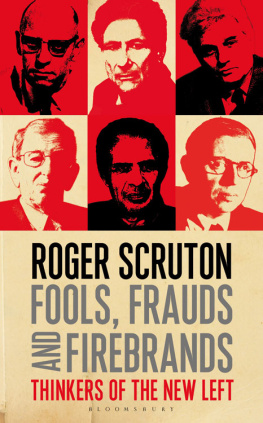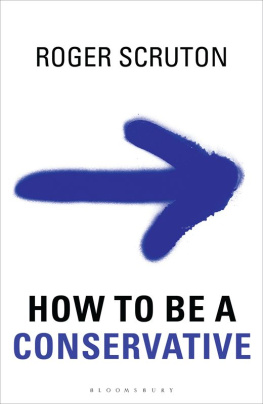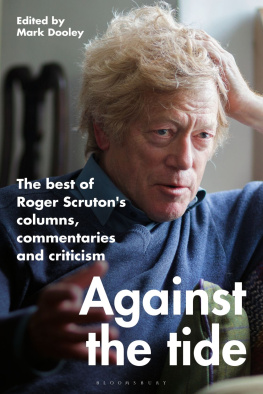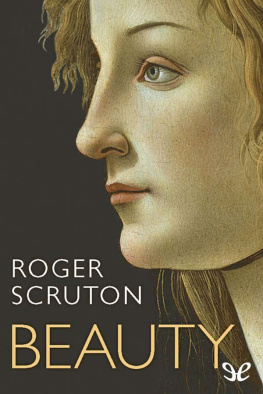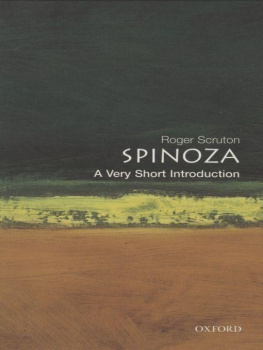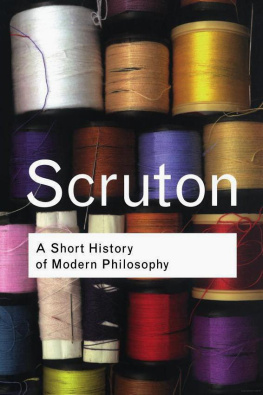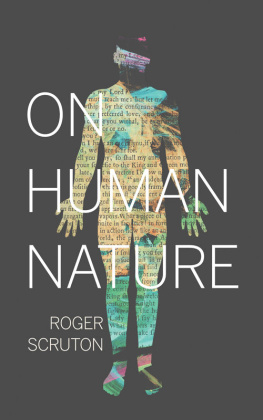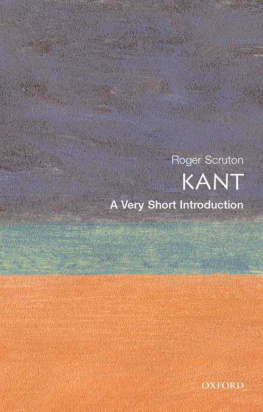Beauty
Beauty
ROGER SCRUTON


Great Clarendon Street, OxfordOX2 6DP
Oxford University Press is a department of the University of Oxford.
It furthers the Universitys objective of excellence in research, scholarship,
and education by publishing worldwide in
Oxford New York
Auckland Cape Town Dar es Salaam Hong Kong Karachi
Kuala Lumpur Madrid Melbourne Mexico City Nairobi
New Delhi Shanghai Taipei Toronto
With offices in
Argentina Austria Brazil Chile Czech Republic France Greece
Guatemala Hungary Italy Japan Poland Portugal Singapore
South Korea Switzerland Thailand Turkey Ukraine Vietnam
Oxford is a registered trade mark of Oxford University Press
in the UK and in certain other countries
Published in the United States
by Oxford University Press Inc., New York
Horsells Farm Enterprises Limited
The moral rights of the author have been asserted
Database right Oxford University Press (maker)
First published 2009
All rights reserved. No part of this publication may be reproduced,
stored in a retrieval system, or transmitted, in any form or by any means,
without the prior permission in writing of Oxford University Press,
or as expressly permitted by law, or under terms agreed with the appropriate
reprographics rights organization. Enquiries concerning reproduction
outside the scope of the above should be sent to the Rights Department,
Oxford University Press, at the address above
You must not circulate this book in any other binding or cover
and you must impose the same condition on any acquirer
British Library Cataloguing in Publication Data
Data available
Library of Congress Cataloging in Publication Data
Data available
Typeset by SPI Publisher Services, Pondicherry, India
Printed in Italy and acid-free paper by Lego S.p.A
ISBN 9780199559527
13579108642
CONTENTS
PICTURE ACKNOWLEDGEMENTS
PREFACE
Beauty can be consoling, disturbing, sacred, profane; it can be exhilarating, appealing, inspiring, chilling. It can affect us in an unlimited variety of ways. Yet it is never viewed with indifference: beauty demands to be noticed; it speaks to us directly like the voice of an intimate friend. If there are people who are indifferent to beauty, then it is surely because they do not perceive it.
Yet judgements of beauty concern matters of taste, and maybe taste has no rational foundation. If so, how do we explain the exalted place of beauty in our lives, and why should we lament the factif fact it isthat beauty is vanishing from our world? And is it the case, as so many writers and artists since Baudelaire and Nietzsche have suggested, that beauty and goodness may diverge, so that a thing can be beautiful precisely in respect of its immorality?
Moreover, since it is in the nature of tastes to differ, how can a standard erected by one persons taste be used to cast judgement on anothers? How, for example, can we pretend that one type of music is superior or inferior to another when comparative judgements merely reflect the taste of the one who makes them?
That familiar relativism has led some people to dismiss judgements of beauty as purely subjective. No tastes can be criticized, they argue, since to criticize one taste is simply to give voice to another; hence there is nothing to learn or to teach that could conceivably deserve the name of criticism. This attitude has put in question many of the traditional disciplines in the humanities. The studies of art, music, literature and architecture, freed from the discipline of aesthetic judgement, seem to lack the firm anchor in tradition and technique that enabled our predecessors to regard them as central to the curriculum. Hence the current crisis in the humanities: is there is any point in studying our artistic and cultural inheritance, when the judgement of its beauty has no rational grounds? Or if we do study it, should this not be in a sceptical spirit, by way of questioning its claims to objective authority, and deconstructing its posture of transcendence?
When each year the Turner prize, founded in memory of Englands greatest painter, is awarded to yet another bundle of facetious ephemera, is this not proof that there are no standards, that fashion alone dictates who will and who will not be rewarded, and that it is pointless to look for objective principles of taste or a public conception of the beautiful? Many people answer yes to those questions, and as a result renounce the attempt to criticize either the taste or the motives of the Turner-prize judges.
In this book I suggest that such sceptical thoughts about beauty are unjustified. Beauty, I argue, is a real and universal value, one anchored in our rational nature, and the sense of beauty has an indispensable part to play in shaping the human world. My approach to the topic is not historical, neither am I concerned to give a psychological, still less an evolutionary, explanation of the sense of beauty. My approach is philosophical, and the principal sources for my argument are the works of philosophers. The point of this book is the argument that it develops, which is designed to introduce a philosophical question and to encourage you, the reader, to answer it.
Some parts of this book started life elsewhere, and I am grateful to the editors of the British Journal of Aesthetics, the Times Literary Supplement, Philosophy and City Journal for permission to re-work material that has already appeared in their pages. I am also grateful to Christian Brugger, Malcolm Budd, Bob Grant, John Hyman, Anthony OHear and David Wiggins, for helpful comments on previous drafts. They saved me from many errors, and I apologize for the errors that remain, which are all my fault.
R.S.
Sperryville, Virginia,
May 2008.
Judging Beauty
We discern beauty in concrete objects and abstract ideas, in works of nature and works of art, in things, animals and people, in objects, qualities and actions. As the list expands to take in just about every ontological category (there are beautiful propositions as well as beautiful worlds, beautiful proofs as well as beautiful snails, even beautiful diseases and beautiful deaths), it becomes obvious that we are not describing a property like shape, size or colour, uncontroversially present to all who can find their way around the physical world. For one thing: how could there be a single property exhibited by so many disparate types of thing?
Well, why not? After all, we describe songs, landscapes, moods, scents and souls as blue: does this not illustrate the way in which a single property can occur under many categories? No, is the answer. For while there is a sense in which all those things can be blue, they cannot be blue in the way that my coat is blue. In referring to so many types of thing as blue, we are using a metaphorone that requires a leap of the imagination if it is to be rightly understood. Metaphors make connections which are not contained in the fabric of reality but created by our own associative powers. The important question about a metaphor is not what property it stands for, but what experience it suggests.
But in none of its normal uses is beautiful a metaphor, even if, like many a metaphor, it ranges over indefinitely many categories of object. So why do we call things beautiful? What point are we making, and what state of mind does our judgement express?
The true, the good and the beautiful
Next page
